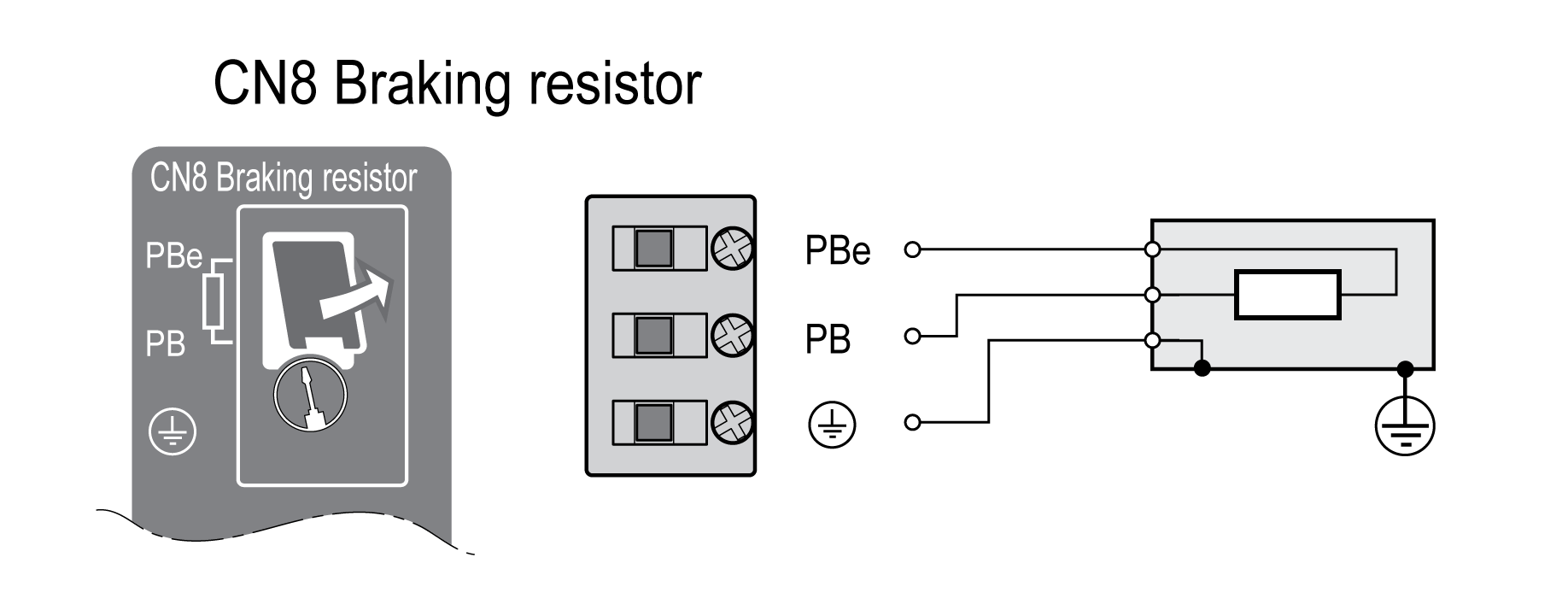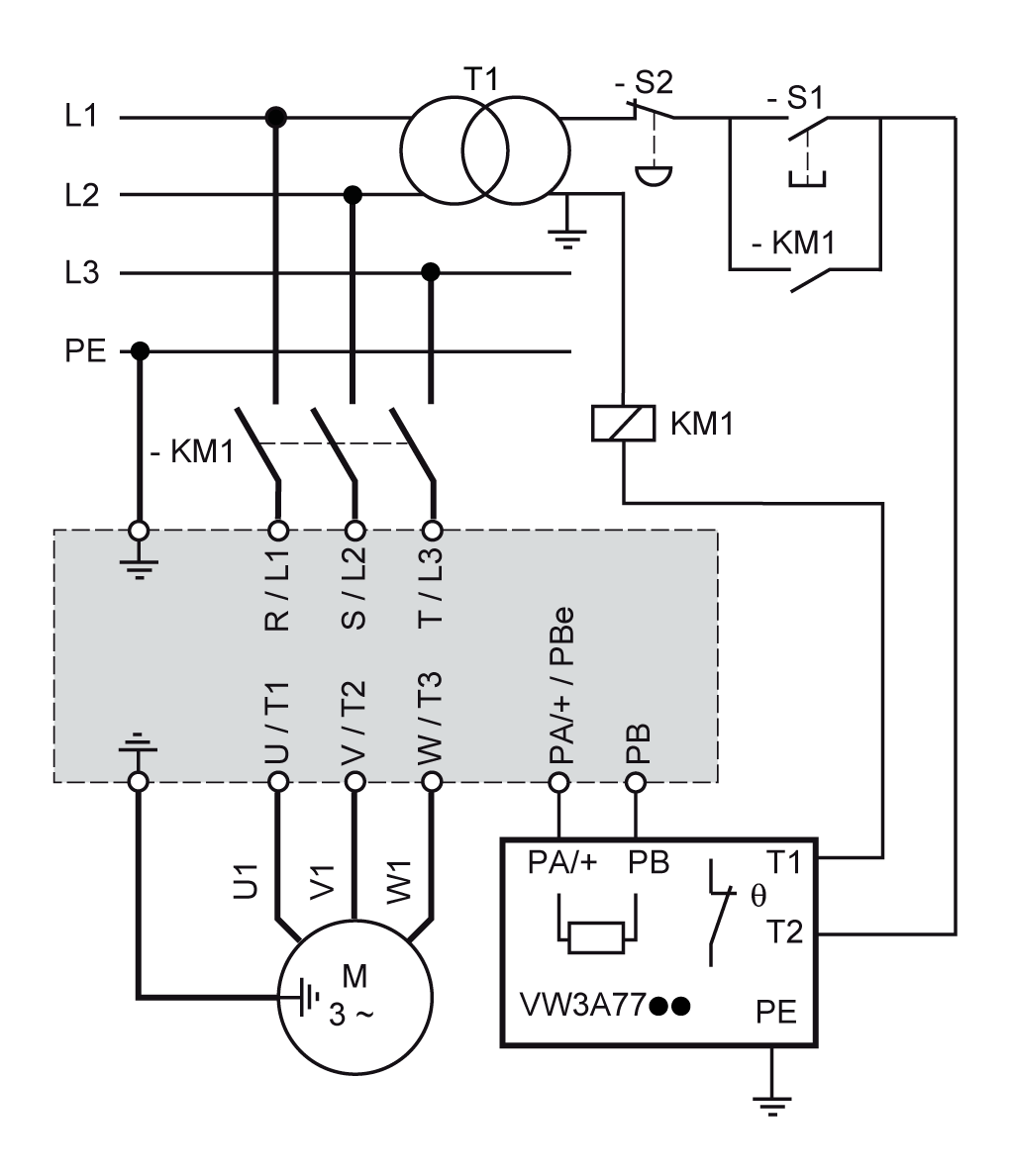Connection Braking Resistor (CN8, Braking Resistor)
An insufficiently rated braking resistor can cause overvoltage on the DC bus. Overvoltage on the DC bus causes the power stage to be disabled. The motor is no longer actively decelerated.
|
|
|
UNINTENDED EQUIPMENT OPERATION |
|
oVerify that the braking resistor has a sufficient rating by performing a test run under maximum load conditions. oVerify that the parameter settings for the braking resistor are correct. |
|
Failure to follow these instructions can result in death, serious injury, or equipment damage. |
A braking resistor is integrated in the device to absorb braking energy. The device is shipped with the internal braking resistor active.
An external braking resistor is required for applications in which the motor must be decelerated quickly and the internal braking resistor cannot absorb the excess braking energy.
Selection and rating of the external braking resistor are described in chapter Rating the Braking Resistor. For suitable braking resistors, see chapter Accessories and Spare Parts.
|
Shield: |
Required, both ends grounded |
|
Twisted Pair: |
- |
|
PELV: |
- |
|
Cable composition: |
Minimum conductor cross section: Same cross section as power stage supply, see chapter Connection Power Stage Supply (CN1). The conductors must have a sufficiently large cross section so that the fuse at the mains connection can trip if required. |
|
Maximum cable length: |
3 m (9.84 ft) |
Properties of the Connection Terminals CN8
|
Characteristic |
Unit |
Value |
|
|---|---|---|---|
|
LXM32•U45, LXM32•U60, LXM32•U90, LXM32•D12, LXM32•D18, LXM32•D30, LXM32•D72 |
LXM32•D85, LXM32•C10 |
||
|
Connection cross section |
mm2 (AWG) |
0.75 ... 3.3 (18 ... 12) |
1.5 ... 25 (14 ... 4) |
|
Tightening torque for terminal screws |
Nm (lb.in) |
0.51 (4.5) |
3.8 (33.6) |
|
Stripping length |
mm (in) |
10 ... 11 (0.39 ... 0.43) |
18 (0.71) |
The terminals are approved for fine-stranded conductors and solid conductors. Observe the maximum permissible connection cross section. Take into account the fact that wire cable ends (ferrules) increase the conductor cross section.
If you use wire cable ends (ferrules), use only wire cable ends (ferrules) with collars for these terminals.

Connecting the External Braking Resistor
oVerify that no voltages are present.
oRemove the cover from the connection.
oGround the ground connection (PE) of the braking resistor.
oConnect the external braking resistor to the device. Note the tightening torque specified for the terminal screws.
oConnect the cable shield to the shield connection at the bottom of the device (large surface area contact).
The parameter RESint_ext is used to switch between the internal and an external braking resistor. See chapter Setting the Braking Resistor Parameters for the parameter settings for the braking resistor. Verify correct operation of the braking resistor during commissioning.
The following graphic shows a functional principle:
